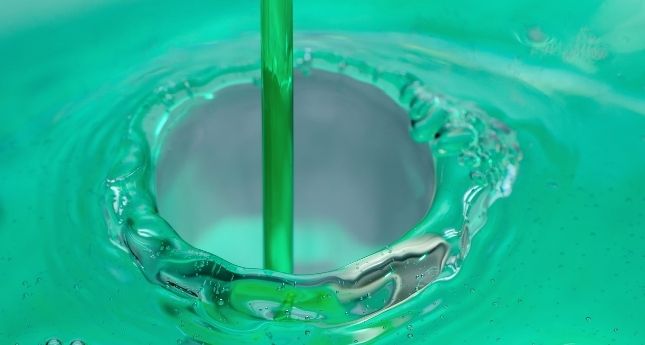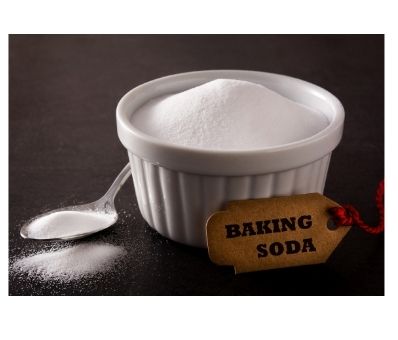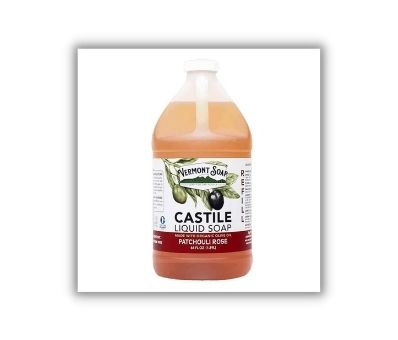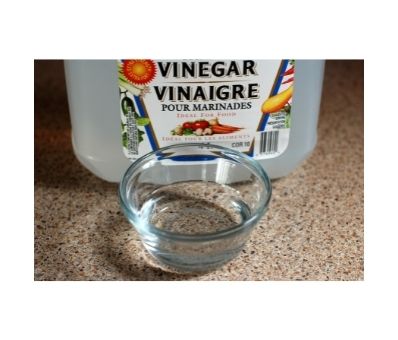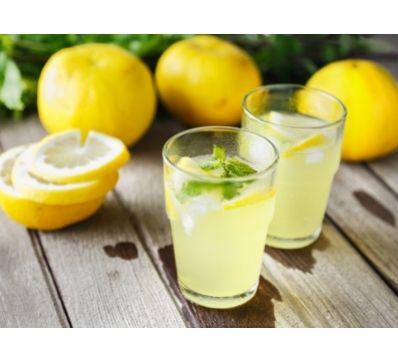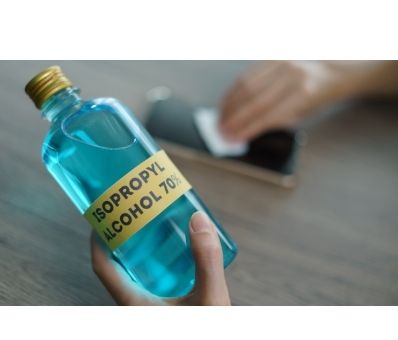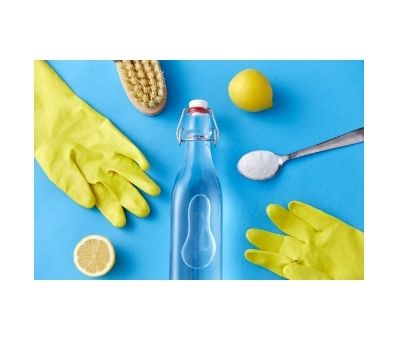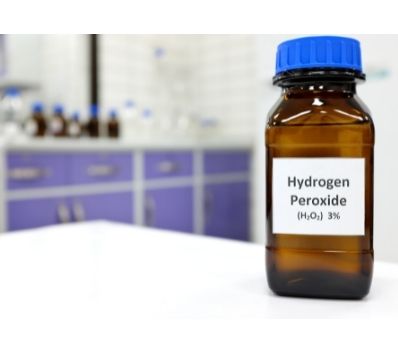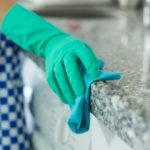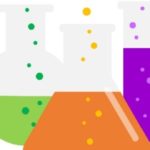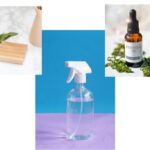We are going to see how to make an all purpose cleaner. An all purpose cleaner is used to spray on all types of surfaces in your home. In the bathroom, this cleaner can be used to clean the vanity area around the toilet; on the floor, if you prefer; on the countertops, stovetop, or shelving in your home.
There are so many different ways to use this cleaner that I highly recommend making an all purpose cleaner for your home.
Read Also; The best all purpose cleaner for bathroom
Ingredients needed to make this multipurpose cleaner are.
- An empty plastic spray bottle.
- A funnel
- A measuring cup
- Castile soap
- Salsa soap ( for heavier stains or dirt )
- Essential oil (optional)
- Water of course.
To begin, remove the cap from the bottle and insert the funnel into the opening. A funnel isn’t necessary; however, a measuring cup works well because the liquid flows readily into the bottle.
To make an all-purpose cleaner,
- add two cups of filtered water from the kitchen sink,
2. Next, is castile soap, which is simply a vegetable plant-based soap made with readily identifiable ingredients. One very good brand is Dr. Bronner’s, but there are many others on the market. Castile soap has been around and it’s a great ingredient to use when making natural cleaning products. For heavier duties like removing oil and addressing those kinds of tasks, you could use Salsa instead of castile soap, which is like the tougher big brother of castile soap. However you won’t need as much, so in this recipe, use two teaspoons.
Instead of adding the castile soap first, which will result in a foaming mess when the water is added on top of it, it is better to add it towards the end. If you’re using Salsa, though, only use about a teaspoon because they are much more intense and potent.
This can also be made with essential oils. There are a plethora of various essential oils you can use in this recipe.
3. Now, gently shake it, as you should every time you use this product.
If you plan on making any other spray cleaners and keeping them in a cleaning caddy or under your sink or in a closet, you’ll need to label your product so you know exactly what it is when you use it again, but if you plan on making just this product and not any other spray cleaners, you probably don’t need to label because you’ll know exactly what it is.
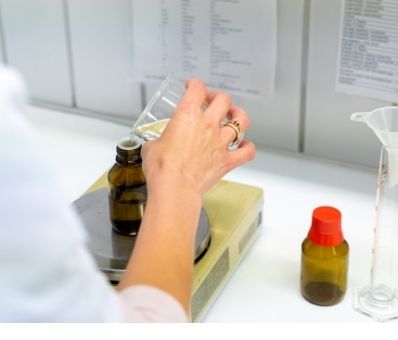
The most often used cleaning products for an all purpose cleaner.
To mix cleaning ingredients and get an all purpose cleaner that works, you must know what components these ingredients contain, when to use them, and when to avoid them. We know that the name all purpose is not very accurate. Multipurpose is more appropriate because no one mixture can be use on all surfaces. However, very many of the researched all purpose cleaning recipes use these components we will see shortly.
Baking Soda.
In addition to being affordable, baking soda (sodium bicarbonate) breaks down acidic soils in the house, neutralizes smells, and may be used to scour surfaces, making it an excellent green cleaning agent. Baking soda, on the other hand, might leave behind a gritty residue unless it is well washed.
Castile soap.
Soap made from vegetable oil, such as Castile soap, is an excellent all-natural cleaning agent. Surfactants in the soap attract and suspend dirt and oil, allowing it to be easily rinsed away. Castile soap is a gentle cleanser that doesn’t remove the skin’s natural oils. If you don’t rinse and dry your surfaces after using Castile soap, you may end up with an unappealing sheen. Hard water might also have an adverse effect on it.
Vinegar.
When it comes to cleaning, vinegar is a great option because it is affordable, breaks down dirt like hard water stains, neutralizes smells, and leaves no dangerous pollutants behind. While vinegar can be used to clean stainless steel and laminate, it should not be used on grout, natural stone, cast iron, or aluminum because of its acidic nature.
Essential oils.
A common element in DIY cleaners, essential oils may be utilized to smell them and enhance their cleaning abilities. Take note that in natural plant materials, distillation is used to extract the plant’s antimicrobial, antifungal, and antibacterial qualities into a concentrated spirit that preserves the plant’s vitality. Essential oils, on the other hand, have the potential to trigger an allergic reaction or even be poisonous (especially in young children, pregnant women, people with breathing issues, and pets). It’s best to use it sparingly in routine cleaning.
Borax.
A strong base that can cut through the dirt, soften the water, and deodorize is what makes borax (sodium tetra borate or sodium borate) a popular cleaning chemical. Great care must be taken when handling Borax. The white residue that might be left behind by borax-based cleaners is best avoided by rinsing them completely. Keep food preparation surfaces safe by using borax with caution (i.e tables and counter tops).
Lemon Juice
The addition of lemon juice to natural cleansers is an excellent one. Citric acid, included in this product, interacts with household dirt to break them down, leaving clean, deodorized surfaces behind. Because it’s a fruit juice, lemon juice may grow rotten if not refrigerated, but it can also be antibacterial and give a lovely aroma to homemade cleansers. If you’re using it on a finished wood surface or natural stone, you’ll want to rinse it completely to avoid etching.
Natural Dish-washing Liquid
Dirt and grease are attracted to and suspended in water by the surfactants in these cleaners, making them easy to remove. When suitably diluted, detergents may be used in hot or cold water, in hard water, to break down stains more efficiently than soap, and they don’t require rinsing.
Isopropyl alcohol
It is generally referred to as rubbing alcohol or surgical spirits, although it has other names as well. It is a good disinfectant and shine enhancer when used in home-made cleansers, according to the manufacturer (look for a version that does not have added color or scent). Rubbing alcohol, on the other hand, has been shown to damage wood and wood finishes in some cases (for example: kitchen tables and cabinets).
Washing Soda
Acid soils are easily cleaned and deodorized using washing soda (Sodium Carbonate), an all-natural cleanser. Gloves should be used when cleaning with washing soda since it is caustic (has a strong base) and leaves a white residue on surfaces that have not been washed sufficiently after use.
Hydrogen Peroxide
For removing stains and disinfecting, hydrogen peroxide is an environmentally benign substitute for chlorine-based bleaches. Water and oxygen are the only two byproducts of this weak acid’s decomposition. Overuse of hydrogen peroxide can harm wood finishes or natural stone as well as bleach textiles.
How to make an all purpose cleaner with vinegar.
Making an all-purpose lemon scented cleaner with vinegar from scratch. To make it, you’ll need
- a large bowl or bucket, whatever you prefer,
- and four cups of hot water.
- Vinegar.
- Tough outer skin of lemon
To start:
- To the bowl, add in a quarter cup of white vinegar, and then two tablespoons of baking soda to get that nice fizz.
- Mix these ingredients together, trying to get the baking soda to dissolve up into the water.
- You’re going to squeeze the lemon juices into the container.
- and then you’re just going to drop in the rind ( that is, the tough outer skin of the lemon) and then you’re just going to let it sit and cool down.
- Once your cleaner is soaked in there and it’s cooled, it does not leave a foul residue, nor does it have a strong aroma like you would get with a store-bought product.
That’s it. As simple as you can get.
How to make an all purpose cleaner with essential oils.
This will show you how to make an all-purpose cleaner that’s non-toxic, inexpensive, and safe to use around your children. Materials to use are:
- A container, which is about 16 ounces, but you can use any bottle or cleaning supply you have and put in a spray top. you can get these on Amazon . they fit nicely in your recycled bottles.
- Essential oils ( lemon, grapefruits or rosemary )
- White vinegar
- so the first thing we’re going to do is we’re going to fill the container.
- Add 10 drops of lemon oil. This is very useful for cleansing and has good aroma.
- Add 10 drops of grapefruit oil which is also for cleansing and destruction of germs.
- and 6 drops of rosemary oil.
- Give it a nice shake and you are set.
This can be used for countertops, toilet seats, glass, etc.
Your own mug Essential oils are nature’s effect, so they are just as effective if not more effective than traditional cleaning products like bleach, and they have no harmful side effects. You can spray this on pretty much anything so you don’t have to worry about your little kids getting it in their mouth and eating germs. A lot of our standard cleaning products cause hormone disruption, so this is an option for those who don’t want to lock up their cleaning supplies. This particular recipe is not harsh on the respiratory system and does not create any breathing difficulties. incredibly easy to use and adaptable. Another choice is You may use the same vinegar water combination.
How to make an all purpose cleaner with bleach
we’re going to look at how to make bleach base disinfectant spray that is simple and easy to do. In order for this solution to be potent enough to clean and disinfect, you’ll need the following items:
- bleach water
- a measuring cup and measuring spoons
- an empty spray bottle that you can reuse
So according to the CDC, for every quart of water you’ll need four teaspoons of bleach and a quart is equal to 32 ounces or 4 cups.
So we’re going to fill the spray bottle all the way up to the 4 cup line with water and add four teaspoons of bleach and re-fill the spray.
Give it a big shake and you are set.
how to make an all purpose cleaner castile soap
we’re going to look at how to make all purpose cleaner with castile soap. As you know, castile soap is a very versatile product, and if you want to stick with all-natural house cleaning solutions, this is a great way to do it. To make the spray bottle solution,
- The first step is to fill the bottle with water. You want to put the water in first so that you don’t end up with the bottle overflowing with bubbles
- Then I’m going to add several drops of pure tea tree essential oil to give it a little more disinfecting power. this oil undiluted can burn your skin so please be careful not to get it on your skin actually I’m going to put about 10-20 drops in here this is a great solution to reach for when you have really gross nasty bathroom spills that you get a lot of when you have young children in the house and you don’t have to worry about them accidentally getting a hold of the spray bottle.
- Give it a big shake after mixing and you are set.
How to make an all purpose cleaner with dish soap.
This tutorial will show how to make an all purpose cleaner with dish soap and is budget friendly. You can use it to clean granite countertops and quartz countertops and mirrors and windows and dining room table even as a carpet spot remover and a laundry spot remover.
So here you go if you want to know how to make a dish soap spray which is budget friendly with only two ingredients that you most likely already have on hand.
- fill the bottle up with water and
- then put one or two squirts of dish soap in there
- tip it over a few times but don’t shake it really hard and that’s it.
You can use this budget-friendly spray on so many things throughout the house. You may still like to use a store-bought lysol cleaner for toilets and baseboards and anything really grimy and gross like the inside of the fridge when things get caked up on the shelves and get really sticky that lysol really comes in handy so these are my two favorite cleaners dish soap and the lysol cleaner.
